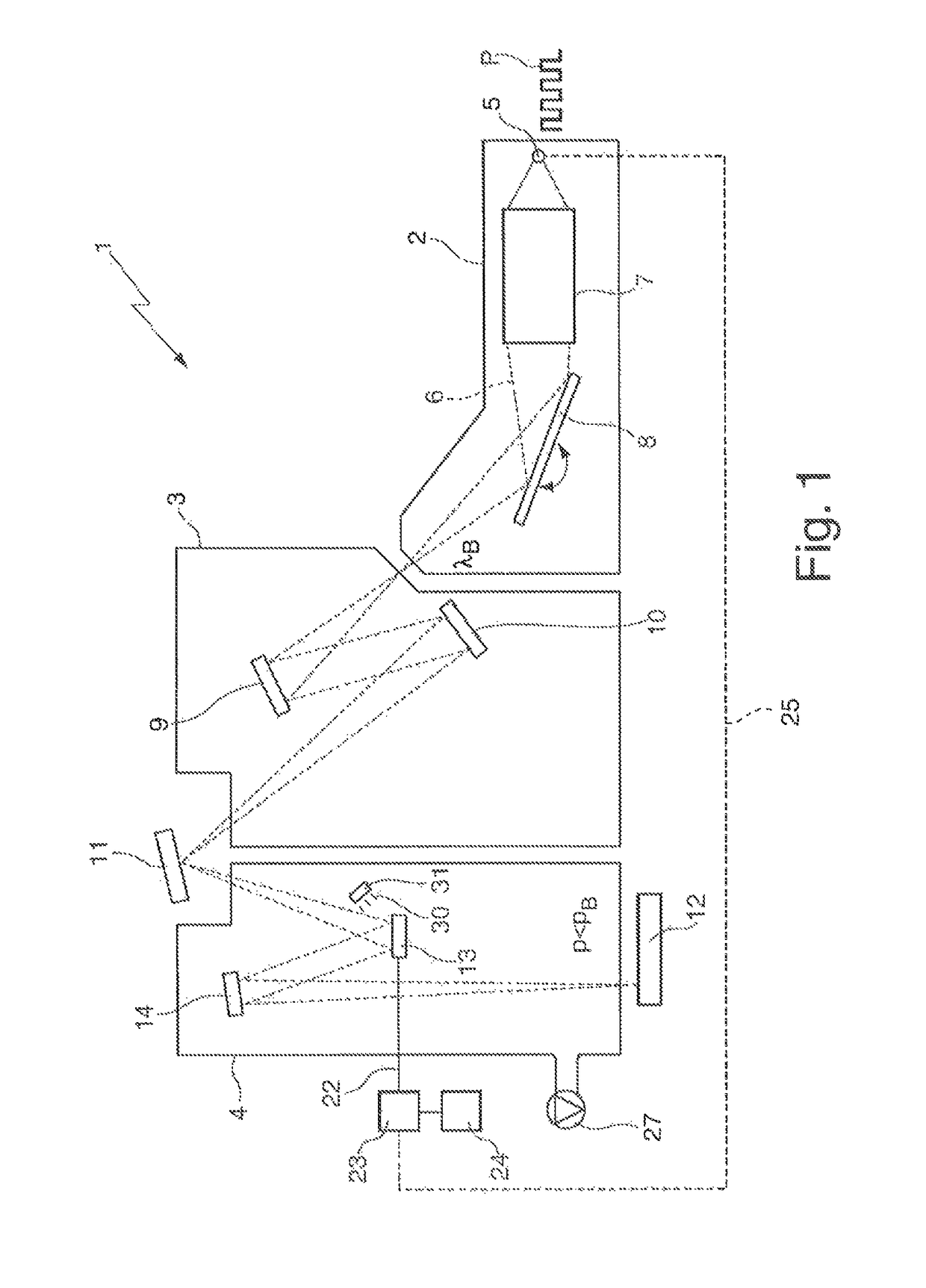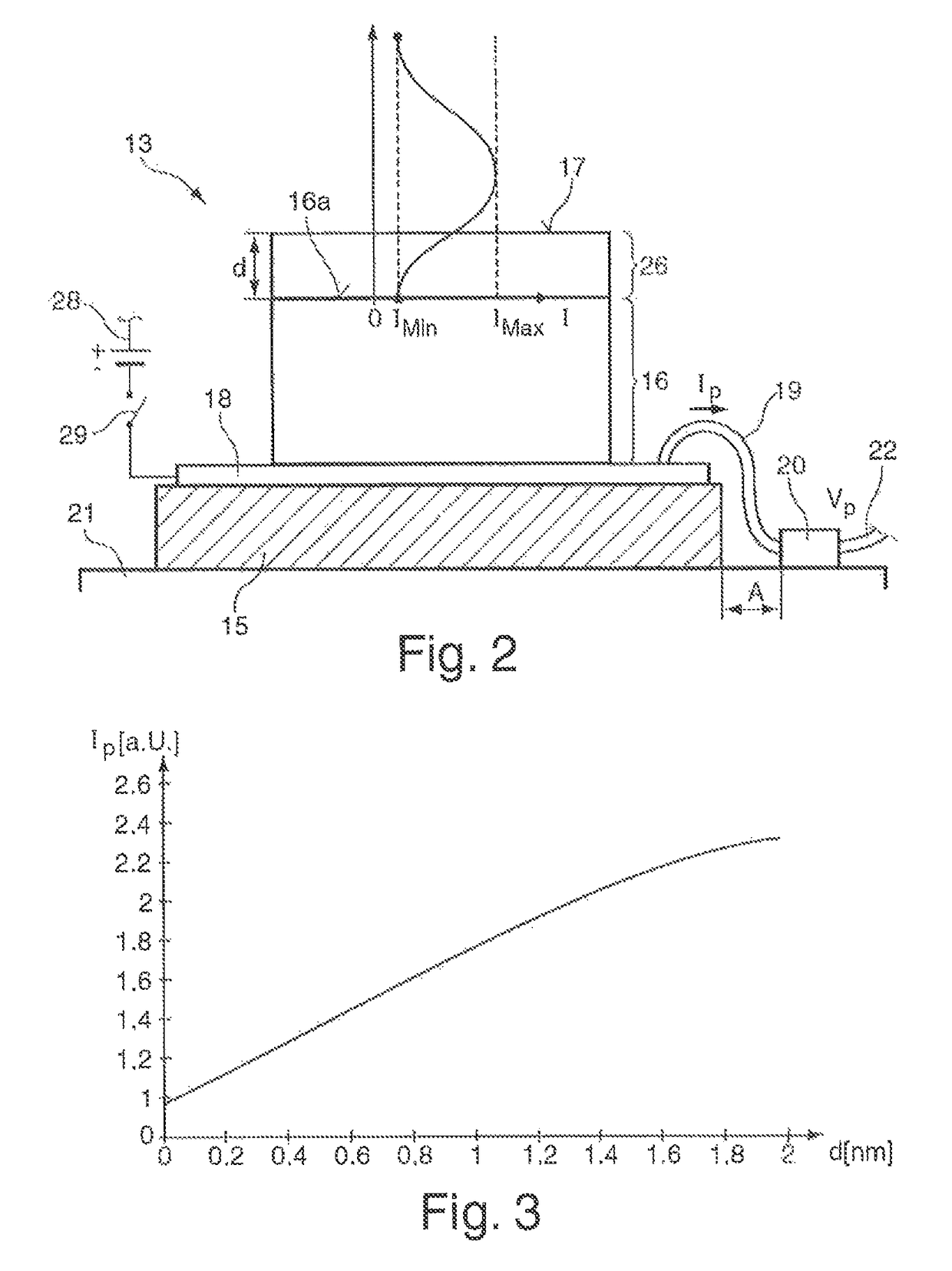Method for determining the phase angle and/or the thickness of a contamination layer at an optical element and EUV lithography apparatus
a technology of euv lithography and optical elements, which is applied in the direction of optical radiation measurement, printers, instruments, etc., can solve the problems of forming a contamination layer at the optical elements, and achieve the effect of simplifying the implementation of this method
- Summary
- Abstract
- Description
- Claims
- Application Information
AI Technical Summary
Benefits of technology
Problems solved by technology
Method used
Image
Examples
Embodiment Construction
[0036]In the following description of the drawings, identical reference signs are used for identical or functionally identical components.
[0037]FIG. 1 schematically shows an EUV lithography apparatus in the form of a projection exposure apparatus 1 for EUV lithography. The projection exposure apparatus 1 has a beam generating system2, an illumination system 3 and a projection system 4, which are accommodated in separate vacuum housings and arranged successively in a beam path 6 proceeding from an EUV light source 5 of the beam shaping system 2. By way of example, a plasma source or a synchrotron can serve as the EUV light source 5. The radiation in the wavelength range of between approximately 5 nm and approximately 20 nm emerging from the light source 5 is firstly focused in a collimator 7. With the aid of a downstream monochromator 8, the desired operating wavelength λB, which is approximately 13.5 nm in the present example, is filtered out by variation of the angle of incidence, ...
PUM
| Property | Measurement | Unit |
|---|---|---|
| distance | aaaaa | aaaaa |
| ultraviolet wavelengths | aaaaa | aaaaa |
| ultraviolet wavelengths | aaaaa | aaaaa |
Abstract
Description
Claims
Application Information
 Login to View More
Login to View More - R&D
- Intellectual Property
- Life Sciences
- Materials
- Tech Scout
- Unparalleled Data Quality
- Higher Quality Content
- 60% Fewer Hallucinations
Browse by: Latest US Patents, China's latest patents, Technical Efficacy Thesaurus, Application Domain, Technology Topic, Popular Technical Reports.
© 2025 PatSnap. All rights reserved.Legal|Privacy policy|Modern Slavery Act Transparency Statement|Sitemap|About US| Contact US: help@patsnap.com



